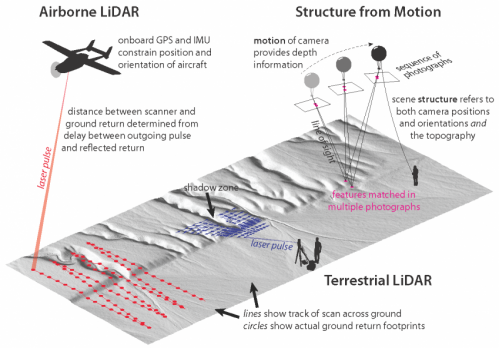Figure 5 from Kevin M. Schmidt et al.
In an urban environment, the effect of a major earthquake such as the 17 Oct. 1989 Loma Prieta event can be pieced together by the infrastructure damaged or destroyed. This study by Kevin M. Schmidt and colleagues details the effects of the Loma Prieta earthquake still detectable 25 years on and sheds light on the potential damage to infrastructure from future earthquakes along the San Andreas fault or the neighboring Foothills thrust belt.
Despite the absence of primary surface rupture from the 1989 Loma Prieta earthquake, patterns of damage to pavement and utility pipes can be used to assess ground deformation near the southwest margin of the densely populated Santa Clara or "Silicon" Valley, California, USA. Schmidt and colleagues utilized more than 1,400 damage sites as an urban strain gage to determine relationships between ground deformation and previously mapped faults.
Post-earthquake surveys of established monuments and the concrete channel lining of Los Gatos Creek reveal belts of deformation consistent with regional geologic structure. The authors conclude that reverse movement largely along preexisting faults, probably enhanced significantly by warping combined with enhanced ground shaking, produced the widespread ground deformation.
Such damage, with a preferential NE-SW sense of shortening, occurred in response to the 1906 and 1989 earthquakes and will likely repeat itself in future earthquakes in the region.
More information: Deformation from the 1989 Loma Prieta earthquake near the southwest margin of the Santa Clara Valley, California, Kevin M. Schmidt et al., U.S. Geological Survey, 345 Middlefield Road, MS-973, Menlo Park, California 94025, USA. Published online 7 Oct. 2014; http://dx.doi.org/10.1130/GES01095.1. Themed issue: A New Three-Dimensional Look at the Geology, Geophysics, and Hydrology of the Santa Clara ("Silicon") Valley.
Provided by Geological Society of America





















